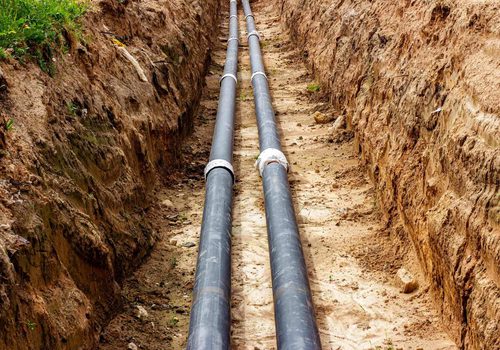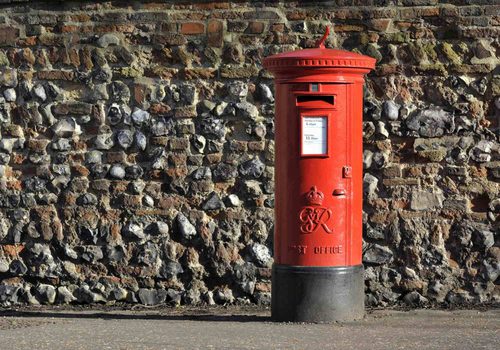Establishing a gas mains connection is a crucial part of nearly all self builds. In some cases, gas will be a cost-effective way of heating your new home.
To find out which of Britain’s 8 Gas Distribution networks (GDNs) you’ll need to apply to, you can check the website of the Energy Network Association. The GDNs are overseen by operators who own and maintain the infrastructure, such as pipes. The other body you need to be aware of is Ofgem: this is the governments regulatory authority for energy companies which makes sure you get the service you’re entitled to.
New gas connections
Firstly, you need to establish the amount of gas supply you’re going to need. Don’t worry, this can be handled by your heating engineer. They’ll examine your building plans in detail, estimating what is required for a house of that size and accounting for appliances like hobs and boilers. They will measure the gas needed in kilowatt hours (kWh).
60kW is usually the maximum capacity for a metre to be considered domestic. Anymore than that and the consumption may be classed as commercial, increasing costs and reducing the number of available engineers. This is unlikely to be a problem for you unless you have a particularly large house with additional amenities to heat, like a pool or guest cottage. If that’s the case, then you’ll need to get a bespoke quote.
The distances between your planned metre location, highway boundary and the nearest gas main will also be necessary for the application. For standard installations, the maximum distance allowed is 40m on private land and 23m on public thoroughfares. If your connection exceeds this, you’ll need to ask for a bespoke price.
If your access to the gas main crosses land owned by someone else, then you’ll need an easement: written permission from the owner of that land.
Reconnecting gas
If you’re demolishing an existing house or developing a brown field site, you need to be aware of any gas supply laid on for the previous building(s). The first thing to do is ask the GDN to come out and do an inspection to see if the existing connection is live or not.
If it is, then you’ll have to apply to have it disconnected while construction work takes place. It will be your responsibility to remove the old pipes and metre. You can then apply for a new supply.
The gas application process
You can apply to your GDN online or through the post. You should hopefully receive a quote within days, providing you qualify for a standard gas installation (i.e. your consumption estimate is under 60kW, you’ve identified your metre location, the trench distances are within the limits and there is no easement required).
You’ll then have 60 days to pay the fee, which will confirm the order. All the details and measurements will have to be verified by the GDN before they start work though. If an easement is involved, then you may have to ask your legal representative to liaise with the GDN to make sure that all the relevant documentation is completed.
Once the GDN is satisfied, they will aim to do the work within 4 to 6 weeks. It could well take longer than that though, depending on the current demand and time of year. If your timeline has been delayed and you know the structure won’t be at a stage where the GDN can do their work on the agreed date, you must remember to reschedule. There will be a charge if they arrive and can’t go ahead due to issues on site.
A standard connection should take around two days once the GDN’s team is on-site. They should also handle all the aspects of the job relating to public land, such as diversions.
How much does a new gas connection cost?
A typical domestic gas supply of less than 40 metres would be around £300-1000 excluding VAT. This cost is normally heavily subsidised based on certain criteria. There are a few factors affecting the cost of a new gas connection, such as:
- Location of your self-build
- Size of gas supply required
- Complexity of the work and number of engineers required
- Number of appliances on the site.
Trenchwork and ducting
One way to keep your quote down is to take responsibility for digging and reinstating the necessary trenches on your own land. They must be a minimum depth of 375mm, though will need to be substantially deeper near the highway boundary as the gas main in the road is likely to be around 600mm deep. They must also be laid on a fall away from the property and clear of obstacles such as stones.
The pipe diameter you need will be established by the GDN based on the required capacity. 32mm is considered standard, followed by 63mm. You will need a lateral clearance of at least 250mm from any other service, like water pipes. If you need to use ducting (which is not recommended over long runs), it will need to be correctly specified. It should be yellow, perforated ducting of a suitable diameter for the pipes (66mm if you’re using 32mmm piping and 150mm for 63mm piping). As part of the backfill process, gas tape must be fitted above the ducting and drawstrings will need to be installed.
Connecting the gas metre
You’ll now need to choose a utility provider - the company you’ll be paying for supplying your gas. Their technician will connect the gas metre and then liaise with the GDN (using the Metre Point Reference Number that the GDN will have created) to confirm that things are up and running. After that, a gas safe engineer will be able to connect your appliances and you should be all set.
Potton’s team of experts are ready to guide you through this and all the other elements of your self-build. Contact us today to chat about your requirements.



